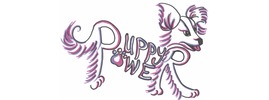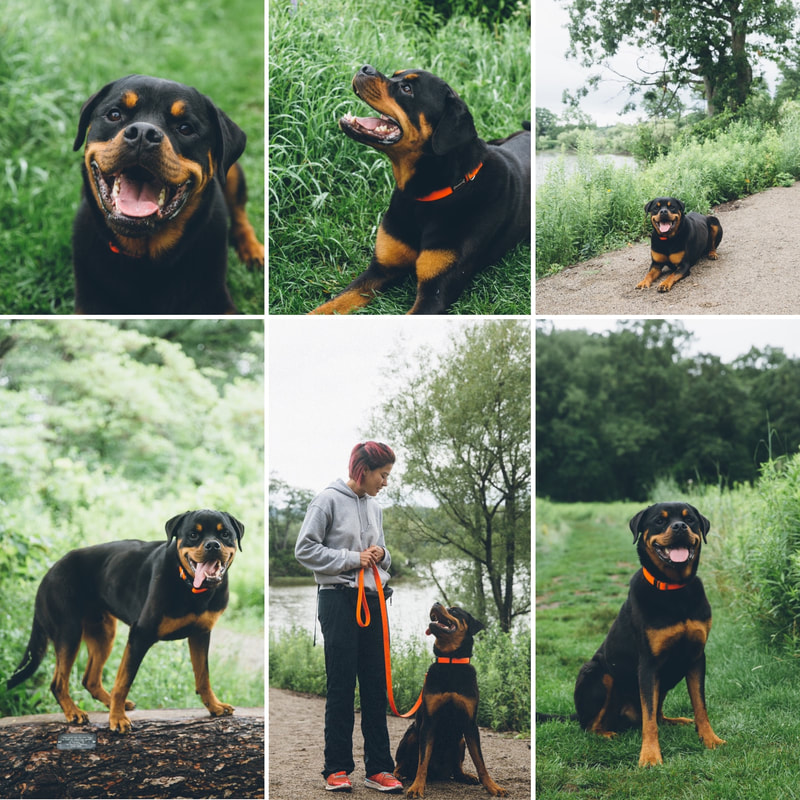|
If you’ve followed us for a while, it should come as no surprise to you that we don’t support the use of punishment or aversive tools (shock, prong, choke collars or anything designed to create pain or discomfort in order to discourage behaviour). There is a growing body of research supporting the reasons to move away from these tools and methods but that is not actually the point of this post. If you do want links to some of the current research, jump onto the AVSAB website and click on the button below their current position statement: Based on current scientific evidence, AVSAB recommends that only reward-based training methods are used for all dog training, including the treatment of behavior problems. What I actually want to address is the dog training community’s response to that position statement - specifically those who are supposed to be positive-based and talk a bit about my personal journey as a dog owner & trainer. Following the release of that position statement, I saw number of memes flying around berating balanced trainers basically calling them stupid or uneducated and it really annoyed me. It’s taken me some time to process my feelings on the issue and find a way to articulate why it annoyed me, why I think it’s a problem, and what we can be doing better.
My family dog was a really laid back rottweiler named Carl, and we walked him on a prong collar for many years (this would have been mid 1990s). We never ran into problems using it, and he seemed perfectly happy to see the leash and the prong collar come out because it meant we were going for a walk. My dad had done a really great job socializing and training him the best he could with the knowledge he had (don’t ask me what trainer he followed; I have no idea but I do remember it was VHS tape tutorials that came with a long line) and he was a fantastic family dog. Some of the games we played with Carl are games I still recommend (one was basically Look At That but back then we didn’t know it as LAT) but looking back there are certainly some things we did that I would not recommend now (eg. kneeing the dog in the chest for jumping up, yelling at the dog for peeing in the house, setting mousetraps on the garbage to prevent him from stealing it, taking his food away and giving it back, etc) but that dog was incredibly resilient and happy-go-lucky and we didn’t see any fallout from using punishments. As an aside, Carl actually figured out how to set off the mousetraps without getting hurt and still proceeded to get into garbage until we finally learned to put it under the sink with a child-lock on the cupboard door. Later in his life (probably 2001 or 2002), I started working for a vet that sold head halters (I don’t even remember if it was a Gentle Leader or Halti). I read up on it and it seemed like a much more humane alternative to the prong collar. I followed the instructions to get him used to it and switched him over to it and he quickly got used to walking with it instead. I do remember him pulling less on it but I think other than that there weren’t any major differences between using the two. He’d put his nose in the loop for a cookie and off we’d go the same way he’d come to me for a treat to get the prong collar put on. Fast forward to my next dog in 2008, who was a much more sensitive and nervous dog - a rescue Doberman named Dexter. He was okay with wearing the head halter for walks but he would still pull and he started to rub some fur off of his nose. A friend’s dog was on a sensible harness, so I asked about it and got one for Dexter. That was a game changer for us and our walks started going better. Dexter had a separate issue though, and that is fear-aggression with strangers coming to the door. This was something I had zero experience with and yelling at him wasn’t working so I reached out to Puppy Power (then owned by Norma Jeanne Laurette) for help. Greg Ceci was teaching their private lessons and he came to to my home to teach me how to change Dexter’s behaviour. Greg did a phenomenal job of explaining how dogs think and learn and demonstrating effective training techniques to do proper desensitization and counter conditioning to triggers for Dexter. Not once did he make me feel guilty for mistakes I’d made, belittle me, or tell me that I was uneducated (I should add that at his point in my life, I already held a B.Sc. in Animal Biology with a minor in Psychology - I had lots of education but not yet learned how to properly apply it to dog training). He effectively replaced the old strategies I’d been using with more effective strategies and we moved forward using those strategies. A few days before this, I also went to a workshop with Melissa Millett of In Dogs We Trust who introduced me to Control Unleashed games, which was all in line with what Greg was saying. We didn’t need to spend time hashing out mistakes I’d made, we just had to learn how to do things another way. This, my friends, is how positive reinforcement works. We don’t need to punish our learners for mistakes made and this applies to our human learners as much as it does our dogs. The more time you spend telling someone they are wrong (especially if you’re degrading them), the more defensive they get and the less receptive they are to learning new strategies. There is just no sense in doing it, and it needs to stop. Maybe I’m more sensitive about this because I started out using those tools and methods too. I think early in my journey if someone had said something negative about using them, I would have just got more defensive about using them and less inclined to try something else. Instead what happened was I was presented with alternatives to try, found that they worked and just had no reason to go back to using those tools & methods. To this day I’m still continually researching to find the best tools and methods to solve various behaviour problems, and if I’m being honest I don’t even recommend the sensible harness anymore because the most current research suggests that a front-attaching harness that keeps the shoulders free (no horizontal strap across the shoulder) is best for the dog. A few years ago Oakley injured his shoulder jumping down off the couch wrong and we couldn’t use a harness on him at all - I had to rely 100% on our training using a regular collar to keep him walking beside me and he did so without issue - which goes to show that once your dog is reliably trained to do a behaviour, the tool you were using to help you get there actually becomes unnecessary and should just be there as a backup for when you come across a situation you haven’t yet proofed with your training. All of this to say that we must continue to evolve our strategies as research gives us more information about what is best for our dogs. It doesn’t have to mean we were wrong before, I would argue that it’s in the past and it doesn’t actually matter how we want to view it. I truly believe every one of us loves our dogs and is doing what we think is best for them with the information we have. I do think we owe it to our dogs to keep upgrading our knowledge and finding the best options for them, but we all have our own journeys and its nobody’s job to judge who is doing it right or wrong. We can set rules for what we allow in our own training schools and for our own dogs but outside of that, it is not our place to say what other people should do whether we agree with them or not. Obviously if you are witnessing outright abuse, speak up - I’m not saying walk away while someone is beating their dog in the street. If you’ve made it this far, what I’d like to do a present a challenge - whether you’re a dog owner or a trainer - and that is to spend less time trying to convince other people that what they’re doing is wrong, and more time just flooding the internet with examples of ways you’ve changed behaviour using positive reinforcement methods with your own dogs. If you want to mention methods you tried before that didn’t work, that’s totally fine, but do it in a compassionate way that doesn’t bash another owner/trainer - there is no need to crap all over trainers who use methods you disagree with/no longer use. I firmly believe that the more we can show people how to use positive reinforcement-based strategies to solve behaviour challenges, the more it will become mainstream to default to those methods, and the less people will find the need to use aversive methods and tools. Here’s how it’ll work: Post a picture of your dog and a behaviour struggle you’ve solved (or are solving) using positive reinforcement. Use the hashtag #puppypowerpositivitychallenge and tag us on Facebook or Instagram (or both to double your chances of winning). I will screenshot and share the entries on the same platform you shared it on so you know it worked. Email me if you don’t see this happen so that I can fix it. I’ll do a random draw for both Facebook and Instagram entries for a Nina Ottosson Dog Brick puzzle on November 19th, 2021. I’ll start: Shown in the pictures is my current Rottweiler, Oakley. We built up a reliable offleash recall for him using positive reinforcement and there were many months when he was a teenager that he had to drag a long line to prevent him from taking off when I called him. Once we’d built up enough reinforcement history for coming when called, he earned his offleash freedom, but I am still careful about where I allow him to be offleash and would use a long line on him in any new place where we haven’t built that reinforcement history for reliably coming when called yet. He also used to really struggle with chasing our cats so we trained a place behaviour and now if I see him look at a cat, all I have to do is say the word “office” and he’ll immediately run into the laundry room and wait for his treat instead of chasing the cats. Half the time when he sees the cats now, he’ll interrupt himself and look at me waiting for me to tell him to go the the office so he can get his treats. If he sees them on walks, we stop and play the Look At That game from Control Unleashed and he does not chase them on walks. Again he usually interrupts himself and looks at me, waiting for me to acknowledge the fact that I saw him see it and start playing the game.
0 Comments
|
AuthorI am a dog owner and a trainer. Every day I learn something new from my dogs and I hope to share experiences that will help people understand their dogs better. Archives
March 2024
Categories |
© Samantha Dejong, B.Sc, CCUI, CTB.ccs, IPDTA-CDT

